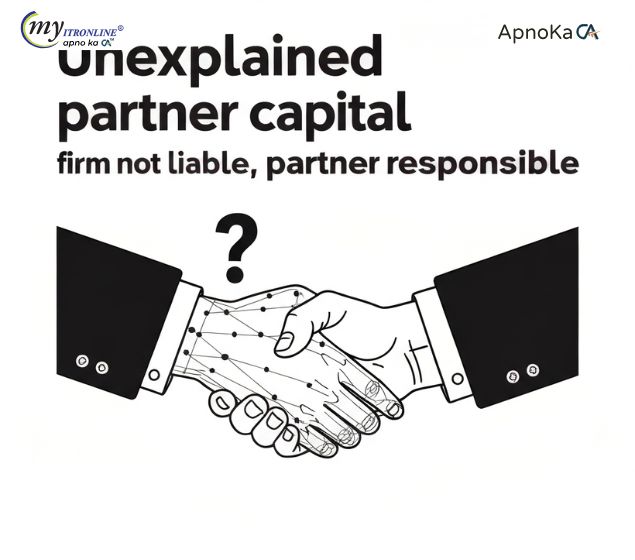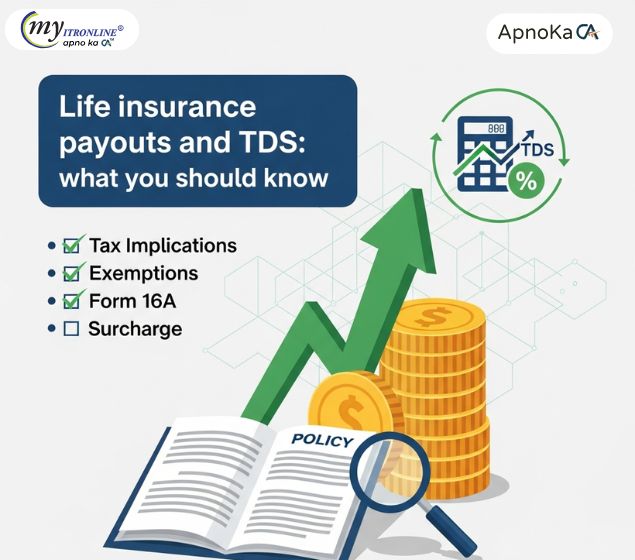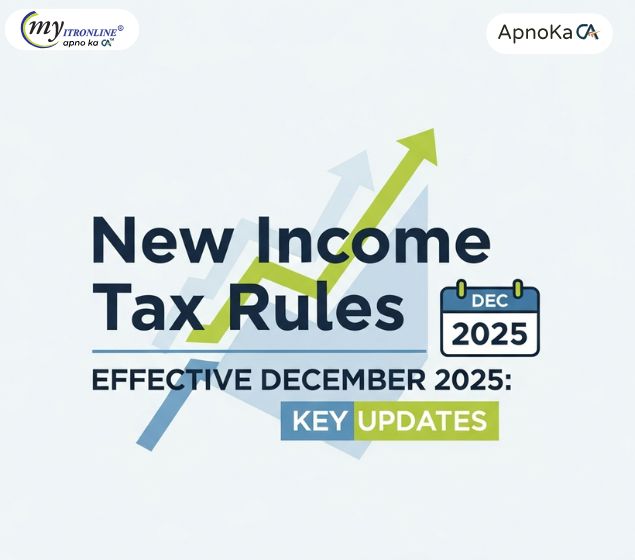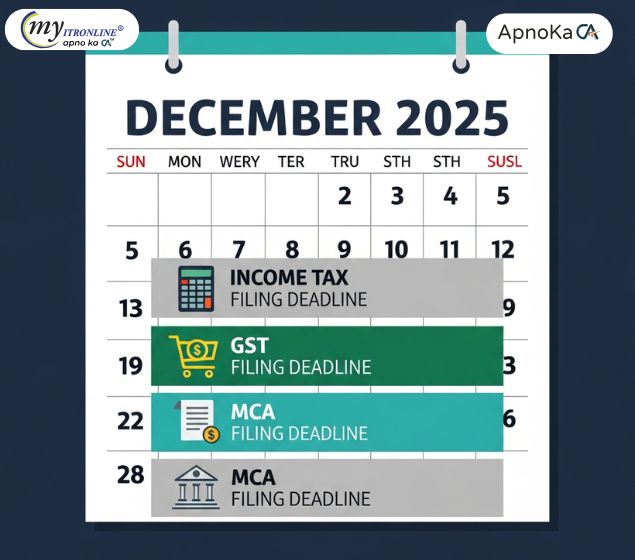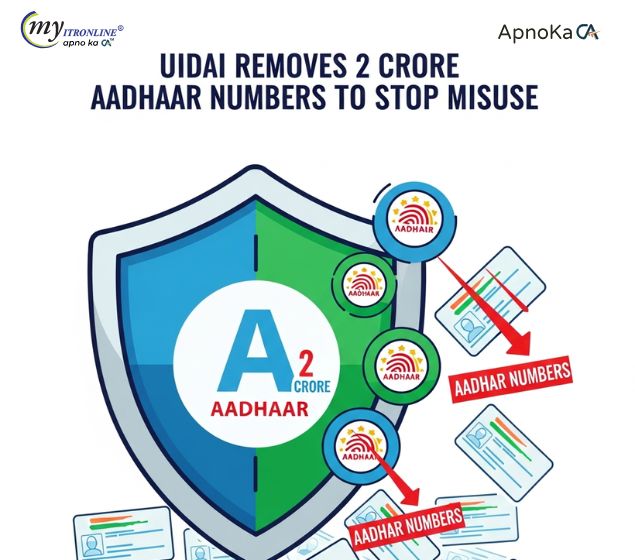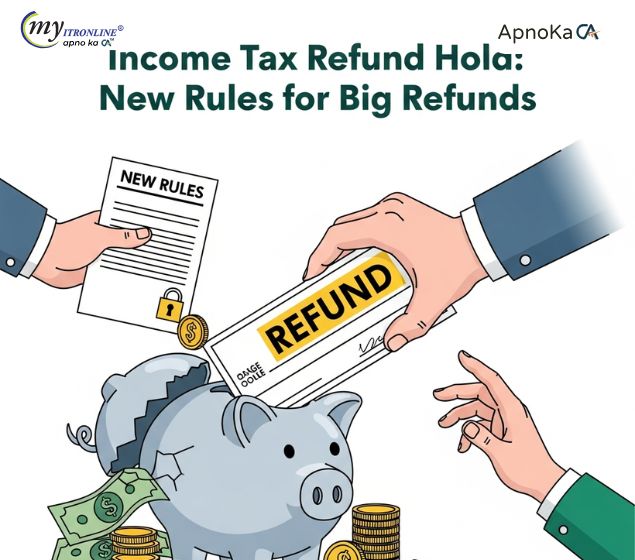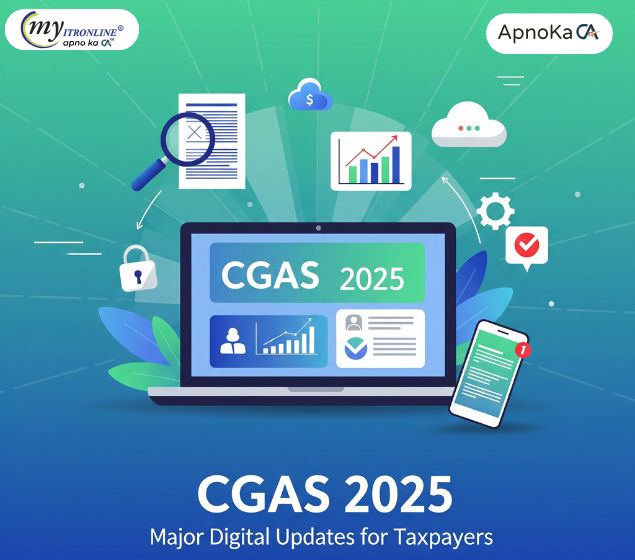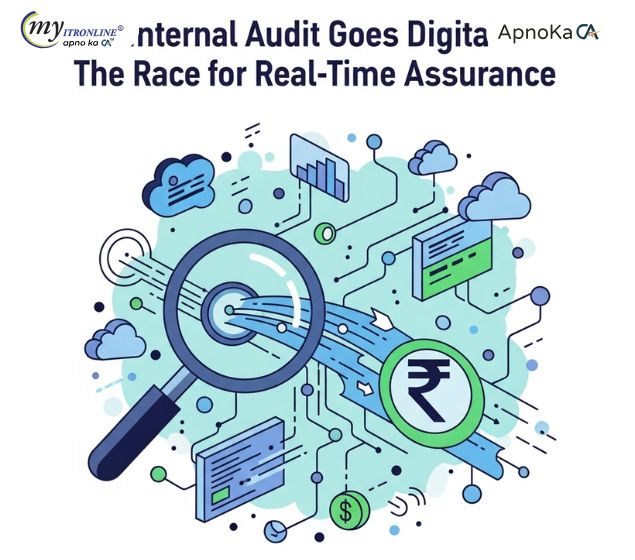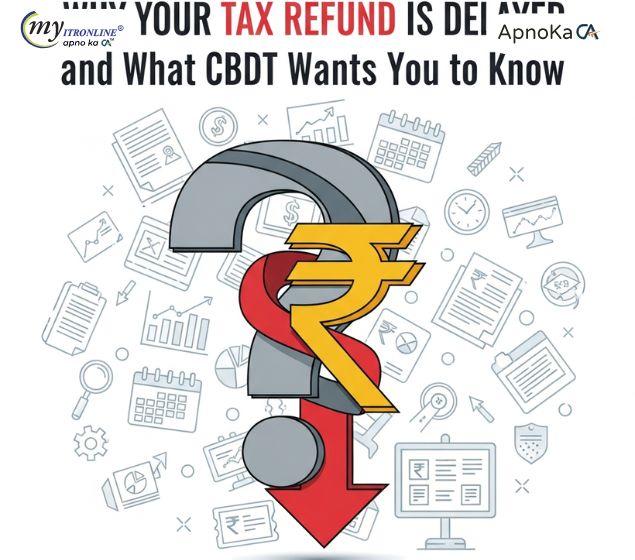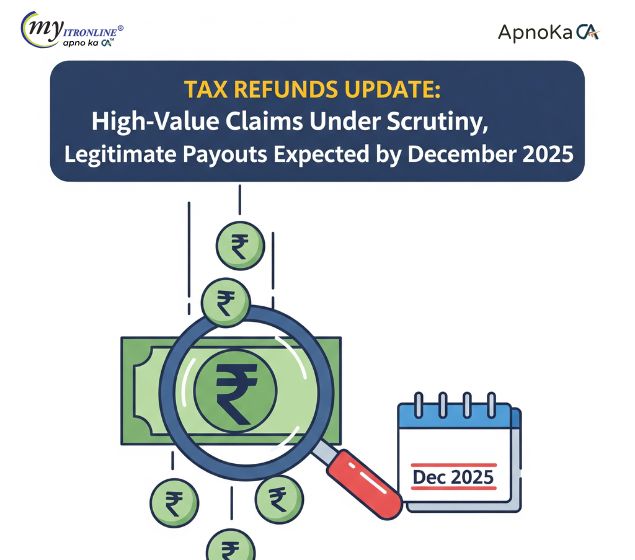ITR Filing AY 2025-26: Essential Changes in Forms 1 to 7 Notified by CBDT
The CBDT has notified the ITR forms (1-7) for AY 2025-26, incorporating changes from the Finance Act, 2024. This blog provides a comprehensive overview of the key modifications in each form, focusing on changes in capital gains reporting, eligibility criteria, deduction disclosures, and other compliance requirements to help taxpayers prepare for the upcoming filing season.
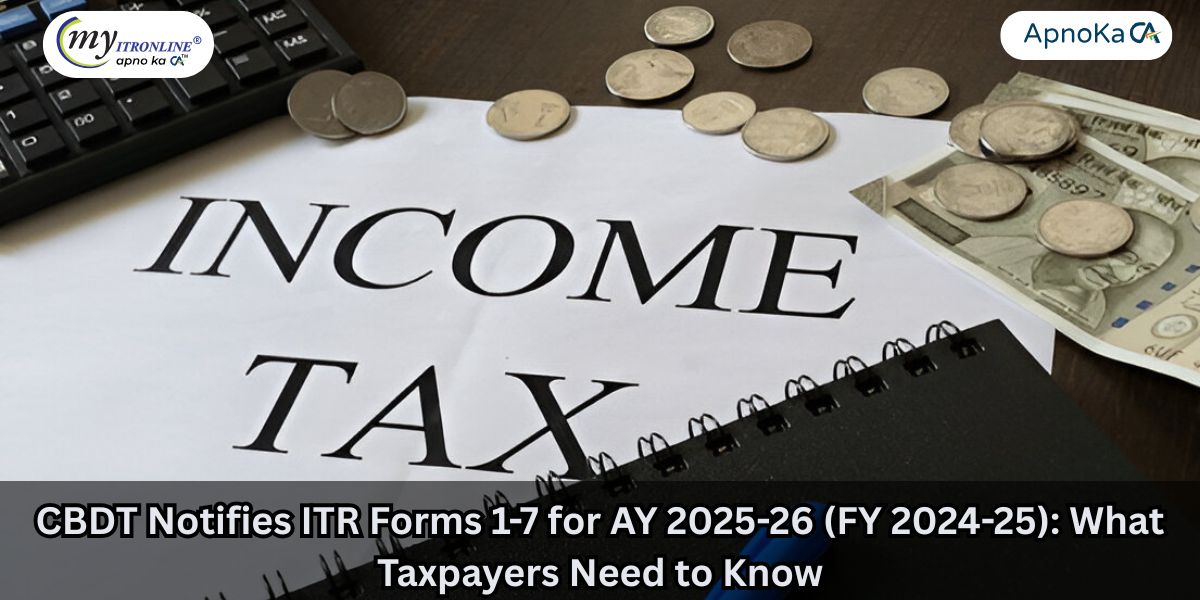
CBDT Notifies ITR Forms 1-7 for AY 2025-26 (FY 2024-25): A Comprehensive Guide to Key Changes
The Central Board of Direct Taxes (CBDT) has officially published the Income Tax Return (ITR) forms, ITR-1 through ITR-7, for the Assessment Year 2025-26, which pertains to the financial year 2024-25. This announcement is a significant milestone for taxpayers as they gear up for the forthcoming filing period. The revised forms reflect various changes resulting from the Finance Act, 2024, as well as other regulatory modifications, with the aim of simplifying the filing process and improving accuracy in reporting.
Taxpayers are encouraged to thoroughly examine the alterations in the ITR forms to ensure compliance and minimize mistakes. Here’s a comprehensive overview of the major updates across the different forms:
Several notable changes are consistently observed across multiple ITR forms for AY 2025-26:
A significant modification is the necessity to report capital gains according to the asset transfer date, specifically separating the gains from transactions that took place before and after July 23, 2024. This aligns with the amendments concerning capital gains taxation introduced in the Finance Act, 2024, notably affecting the taxation of long-term capital gains from real estate.
The forms now feature dedicated sections for reporting capital losses resulting from share buybacks. Importantly, for buybacks that commence on or after October 1, 2024, such losses will be permitted if the related dividend income has been declared for tax under the section "Income from Other Sources."
The revised forms call for more detailed information on the various deductions claimed under Chapter VI-A (such as Section 80C, 80D, etc.), encouraging greater transparency in the claims for deductions.
To facilitate better reconciliation of Tax Deducted at Source (TDS), taxpayers must now indicate the specific section code under which the TDS was deducted in the relevant schedules.
For those with business income, the forms now require confirmation regarding the choice made for the new tax regime under Section 115BAC and the submission of Form 10-IEA in previous years, if applicable.
Let’s explore the significant changes that are unique to each ITR form:
ITR-1 (Sahaj):
This straightforward form for resident individuals with a total income not exceeding Rs. 50 lakh from salary, a single house property, other sources, and agricultural income capped at Rs. 5,000, has seen an extension in eligibility. Salaried individuals with tax-exempt long-term capital gains (LTCG) from selling listed equity shares or equity-oriented fund units up to Rs. 1.25 lakh under Section 112A can now utilize ITR-1. In the past, these individuals were obligated to file ITR-2.
ITR-2:
This form is designated for individuals and HUFs who do not possess income from business profits or gains but have income from capital gains, multiple house properties, or foreign assets. Beyond the general updates in capital gains reporting, the threshold for declaring assets and liabilities in Schedule AL has been raised from Rs. 50 lakh to Rs. 1 crore of total income, offering relief to middle-income taxpayers.
ITR-3:
This form is intended for individuals and Hindu Undivided Families (HUFs) who earn income through business or professional activities. Similar to ITR-2, the threshold for reporting assets and liabilities in Schedule AL has been increased to Rs. 1 crore of total income. Additionally, the form includes reporting obligations related to Section 44BBC concerning the cruise industry. There are also improved reporting requirements for deductions such as 80C and HRA.
ITR-4 (Sugam):
This form is designed for resident individuals, HUFs, and firms (excluding LLPs) with a total income not exceeding Rs. 50 lakh and income from business and profession calculated on a presumptive basis under sections 44AD, 44ADA, or 44AE. Like ITR-1, taxpayers choosing the presumptive taxation scheme and who have tax-exempt Long-Term Capital Gains (LTCG) up to Rs. 1.25 lakh under Section 112A can now utilize ITR-4.
ITR-5:
This form applies to firms, LLPs, Associations of Persons (AOPs), Bodies of Individuals (BOIs), Artificial Juridical Persons (AJPs), cooperative societies, and local authorities. Key updates correspond with general changes regarding the separated reporting of capital gains and the reporting of capital loss on share buybacks. The form also references Section 44BBC for applicable entities in the cruise sector and includes enhanced TDS reporting.
ITR-6:
This form is to be submitted by companies that do not claim exemption under Section 11. The updates reflect overall changes related to capital gains reporting, share buyback losses, and increased TDS disclosures. Furthermore, specific reporting requirements concerning the presumptive taxation scheme for the cruise business (Section 44BBC) and minimum profit reporting for the raw diamond sector (Rule 10TIA) have been included.
ITR-7:
This form is applicable to individuals including trusts, institutions, political parties, and universities that must file returns under sections 139(4A), 139(4B), 139(4C), or 139(4D). The revised ITR-7 features improved disclosure requirements, especially regarding voluntary contributions, accumulated income, and fund application. Amendments in capital gains reporting and the handling of capital loss on share buybacks also apply to those filing ITR-7.
Taxpayers should obtain the appropriate ITR form from the official e-filing portal of the Income Tax Department and ensure they select the correct form based on their income sources and classification. It is recommended to reconcile their income and deduction information with the AIS (Annual Information Statement) and TIS (Taxpayer Information Summary) to guarantee accurate reporting.
The deadline for filing income tax returns for individuals and others not requiring an audit is typically July 31, 2025. For taxpayers whose accounts need to be audited, the deadline is October 31, 2025. Entities engaged in international or specified domestic transactions must file by November 30, 2025.
The announcement of ITR forms for AY 2025-26 with these important modifications highlights the government's commitment to improving the tax reporting system, enhancing transparency, and aligning with legislative updates. Taxpayers are encouraged to become well-acquainted with these revisions ahead of time to ensure a seamless and accurate filing experience. Consulting with a tax professional can be advantageous, particularly for those with intricate income scenarios or substantial capital gains. Stay updated and submit your returns promptly to prevent penalties and ensure adherence to income tax regulations.
FILING YOUR INCOME TAX RETURN F.Y 2024-25 (A.Y. 2025-2026) WITH MYITRONLINE
The income tax filing deadline is right around the corner. If you haven’t filed yet, do it today with Myitronline! Avoid last minute rush and file your tax return today on MYITRONLINE in Just 5 mins.(www.myitronline.com)
If you are looking for eCA assistance to file your income tax return/ GST, you can opt for MYITRONLINE eCA assisted plan starting
Upload Salary Individual Form-16
If you have any questions with filing your tax return, please reply to this mail. info@myitronline.com OR call 9971055886,8130309886.
Note-All the aforementioned information in the article is taken from authentic resources and has been published after moderation. Any change in the information other than fact must be believed as a human error. For queries mail us at marketing@myitronline.com
Krishna Gopal Varshney
An editor at apnokacaKrishna Gopal Varshney, Founder & CEO of Myitronline Global Services Private Limited at Delhi. A dedicated and tireless Expert Service Provider for the clients seeking tax filing assistance and all other essential requirements associated with Business/Professional establishment. Connect to us and let us give the Best Support to make you a Success. Visit our website for latest Business News and IT Updates.
Leave a reply
Your email address will not be published. Required fields are marked *Share this article
Krishna Gopal Varshney, Founder & CEO of Myitronline Global Services Private Limited at Delhi. A dedicated and tireless Expert Service Provider for the clients seeking tax filing assistance and all other essential requirements associated with Business/Professional establishment. Connect to us and let us give the Best Support to make you a Success. Visit our website for latest Business News and IT Updates.
View articles









